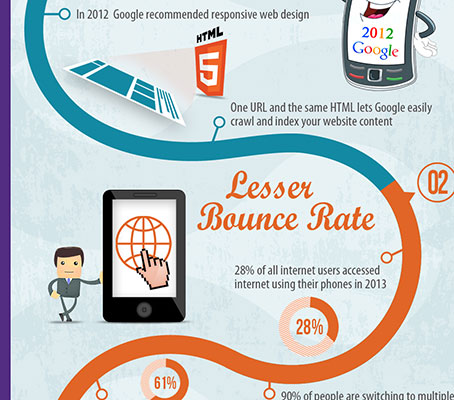The Advancement Of Website Design: After That And Currently
The Advancement Of Website Design: After That And Currently
Blog Article
https://www.globenewswire.com/en/news-release/2022/01/12/2365906/0/en/Ruth-Kuttler-is-Changing-the-World-of-Marketing-with-Unique-High-Converting-Digital-Content-Marketing-Strategies.html Produced By-Booker Clarke
In the past, websites were straightforward and concentrated on details. Navigating was straight, and design was for desktop computers. Now, user experience is key. Information guides designs for easy navigation. Responsive designs suit different gadgets. Today, dark setting decreases strain, and minimal menus enhance navigation. Interactive attributes engage individuals, and strong visuals stand apart. AI combination increases interaction. See exactly how design has advanced to enhance your online journey.
Early Days of Website Design
In the early days of web design, simpleness reigned supreme. Websites were basic, with restricted shades, typefaces, and formats. The focus was on giving details rather than flashy visuals. Users accessed the net with slow-moving dial-up connections, so rate and functionality were key.
Navigation food selections were straightforward, generally situated at the top or side of the page. Web sites were developed for computer, as mobile browsing wasn't yet prevalent. Web content was king, and designers focused on easy readability over complex layout elements.
HTML was the key coding language utilized, and developers needed to work within its constraints. Computer animations and interactive features were very little contrasted to today's criteria. Web sites were fixed, with little vibrant web content or personalized individual experiences.
Surge of User-Focused Layout
With the evolution of internet site design, a shift in the direction of user-focused style principles has ended up being significantly noticeable. Today, developing sites that focus on customer experience is crucial for involving visitors and achieving company objectives. User-focused design includes comprehending the demands, preferences, and habits of your target market to tailor the site's layout, material, and includes as necessary.
Designers currently conduct detailed study, such as customer surveys and usability testing, to gather understandings and comments straight from customers. This data-driven strategy assists in producing intuitive navigation, clear calls-to-action, and visually appealing user interfaces that resonate with visitors. By placing the individual at the facility of the style process, web sites can supply a more personalized and satisfying experience.
Receptive design has actually likewise become a crucial aspect of user-focused style, ensuring that internet sites are enhanced for numerous tools and screen dimensions. This flexibility improves accessibility and functionality, dealing with the diverse means customers connect with web sites today. In essence, the rise of user-focused style signifies a change in the direction of developing digital experiences that prioritize the demands and assumptions of completion user.
Modern Trends in Website Design
Discover the most up to date trends shaping website design today. One noticeable pattern is dark setting style, providing a streamlined and modern appearance while reducing eye stress in low-light settings. One more vital pattern is minimal navigating, simplifying menus and improving customer experience by concentrating on essential elements. Including micro-interactions, such as computer animated switches or scrolling impacts, can produce an extra appealing and interactive web site. Responsive design remains essential, making sure seamless customer experiences throughout various gadgets. In addition, utilizing vibrant typography and asymmetrical formats can include visual passion and draw attention to details content.
Incorporating AI modern technology, like chatbots for client assistance or tailored suggestions, improves individual interaction and improves processes. Accessibility has also become a significant fad, with designers prioritizing comprehensive design practices to accommodate diverse customer demands. Embracing sustainability by maximizing website performance for rate and performance is an additional arising fad in web design. Collaborating with customer responses and information analytics to iterate and enhance design constantly is important for staying relevant in the ever-evolving digital landscape. By embracing these modern-day patterns, you can develop a visually attractive, easy to use web site that reverberates with your target market.
Final thought
As you reflect on the evolution of website layout from the early days to now, you can see exactly how user-focused layout has become the driving pressure behind contemporary trends.
Welcome the journey of modification and adaptation in website design, always maintaining the individual experience at the center.
Keep current with the current trends and innovations, and never ever quit advancing your strategy to create visually stunning and user-friendly sites.
Advance, adapt, and develop - the future of web design remains in your hands.
